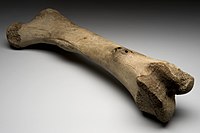
Evaluation and quantitative analysis of 11 compounds in Morinda officinalis using ultra-high performance liquid chromatography and photodiode array detection coupled with chemometrics.
Sign Up to like & getrecommendations! Published in 2017 at "Journal of separation science"
DOI: 10.1002/jssc.201700484
Abstract: Morinda officinalis (Rubiaceae) is a traditional Chinese medicine widely used for the treatment of impotence and osteoporosis in clinical therapy. In the present study, a rapid and simple ultra-high performance liquid chromatography with photodiode array… read more here.
Keywords: detection; analysis; morinda officinalis; ultra high ... See more keywords

Rubiadin-1-methyl ether from Morinda officinalis How. Inhibits osteoclastogenesis through blocking RANKL-induced NF-κB pathway.
Sign Up to like & getrecommendations! Published in 2018 at "Biochemical and biophysical research communications"
DOI: 10.1016/j.bbrc.2018.10.100
Abstract: Rubiadin-1-methyl ether (RBM) is a natural anthraquinone compound isolated from the root of Morinda officinalis How. In our previous study, RBM was found to have inhibitory effects on the TRAP activity of osteoclasts, which means… read more here.
Keywords: rubiadin methyl; morinda officinalis; rbm; bone ... See more keywords

Bioassay-guided isolation and evaluation of anti-osteoporosis active polysaccharides from Morinda officinalis.
Sign Up to like & getrecommendations! Published in 2020 at "Journal of ethnopharmacology"
DOI: 10.1016/j.jep.2020.113113
Abstract: ETHNOPHARMACOLOGICAL RELEVANCE As a famous Chinese tonic herb for the bones and joints, the clinical efficacy of Morinda officinalis has shown its advantages in the treatment of bone disease. However, the anti-osteoporosis potential and responsible… read more here.
Keywords: anti osteoporosis; bioassay guided; morinda officinalis; guided isolation ... See more keywords

Metabolomics profiling provides valuable insights into the underlying mechanisms of Morinda officinalis on protecting glucocorticoid‐induced osteoporosis
Sign Up to like & getrecommendations! Published in 2019 at "Journal of Pharmaceutical and Biomedical Analysis"
DOI: 10.1016/j.jpba.2019.01.019
Abstract: &NA; Morinda officinalis (MO) has long been used as a traditional herbal medicine for the treatment of bone fractures and joint diseases in China. Monotropein (Mon) and rubiadin‐1‐methyl ether (Rub) are major bioactive components in… read more here.
Keywords: glucocorticoid induced; morinda officinalis; metabolomics profiling; underlying mechanisms ... See more keywords

Network pharmacology integrated molecular docking reveals the bioactive components and potential targets of Morinda officinalis–Lycium barbarum coupled-herbs against oligoasthenozoospermia
Sign Up to like & getrecommendations! Published in 2021 at "Scientific Reports"
DOI: 10.1038/s41598-020-80780-6
Abstract: Oligoasthenozoospermia (OA) is one of the most common types of male infertility affecting sperm count and sperm motility. Unfortunately, it is difficult for existing drugs to fundamentally improve the sperm quality of OA patients, because… read more here.
Keywords: morinda officinalis; potential targets; pharmacology; officinalis lycium ... See more keywords

A new iridoid glucoside from the roots of Morinda officinalis.
Sign Up to like & getrecommendations! Published in 2023 at "Journal of Asian natural products research"
DOI: 10.1080/10286020.2023.2211510
Abstract: A new iridoid glucoside, moridoside (1), and nine known compounds, asperulosidic acid (2), 6-O-epi-acetylscandoside (3), geniposidic acid (4), 2-hydroxymethylanthraquinone (5), 2-hydroxymethyl-3-hydroxyanthraquinone (6), damnacanthol (7), lucidine-ω-methyl ether (8), 2-hydroxy-1-methoxyanthraquinone (9), and 3,8-dihydroxy-1,2-dimethoxyanthraquinone (10) were isolated from… read more here.
Keywords: glucoside roots; roots morinda; morinda officinalis; new iridoid ... See more keywords

Morinda officinalis polysaccharide enable suppression of osteoclastic differentiation by exosomes derived from rat mesenchymal stem cells
Sign Up to like & getrecommendations! Published in 2022 at "Pharmaceutical Biology"
DOI: 10.1080/13880209.2022.2093385
Abstract: Abstract Context Morinda officinalis F.C. How. (MO) (Rubiaceae) can strengthen bone function. Objective To examine the functional mechanism and effect of MO polysaccharides (MOPs) in rats with glucocorticoid-induced osteoporosis (GIOP). Materials and methods Rats with… read more here.
Keywords: osteoclastic differentiation; bone; mesenchymal stem; morinda officinalis ... See more keywords

Morinda officinalis extract exhibits protective effects against atopic dermatitis by regulating the MALAT1/miR‐590‐5p/CCR7 axis
Sign Up to like & getrecommendations! Published in 2023 at "Journal of Cosmetic Dermatology"
DOI: 10.1111/jocd.15610
Abstract: Atopic dermatitis (AD) is a chronic inflammatory skin disease with a genetic predisposition, and the traditional Chinese medicine Morinda officinalis and its roots are characterized with anti‐inflammatory effects and have been used for the treatment… read more here.
Keywords: extract exhibits; officinalis extract; morinda; morinda officinalis ... See more keywords

The Extracts of Morinda officinalis and Its Hairy Roots Attenuate Dextran Sodium Sulfate-Induced Chronic Ulcerative Colitis in Mice by Regulating Inflammation and Lymphocyte Apoptosis
Sign Up to like & getrecommendations! Published in 2017 at "Frontiers in Immunology"
DOI: 10.3389/fimmu.2017.00905
Abstract: Morinda officinalis is beneficial for the treatment of inflammatory bowel disease (IBD). The hairy root with higher genetic and biochemical stability cultured from M. officinalis might have similar effects to treat IBD. In this study,… read more here.
Keywords: dextran sodium; treatment; morinda officinalis; colitis ... See more keywords

Neuroprotective effects of Morinda officinalis How.: Anti-inflammatory and antioxidant roles in Alzheimer’s disease
Sign Up to like & getrecommendations! Published in 2022 at "Frontiers in Aging Neuroscience"
DOI: 10.3389/fnagi.2022.963041
Abstract: Pharmacological studies have shown that some traditional Chinese medicines (TCMs) have applications in the treatment of Alzheimer’s disease (AD). Morinda officinalis How. (MO) is a TCM with a long history and is widely used to… read more here.
Keywords: anti inflammatory; alzheimer disease; morinda officinalis; inflammatory antioxidant ... See more keywords

Morinda officinalis oligosaccharides mitigate chronic mild stress-induced inflammation and depression-like behaviour by deactivating the MyD88/PI3K pathway via E2F2
Sign Up to like & getrecommendations! Published in 2022 at "Frontiers in Pharmacology"
DOI: 10.3389/fphar.2022.855964
Abstract: Morinda officinalis oligosaccharides (MOs) are natural herbal extracts that have been shown to exert antidepressant effects. However, the mechanism of this effect remains unclear. Here, we explored the mechanism by which MOs improved experimental depression.… read more here.
Keywords: chronic mild; myd88 pi3k; mild stress; morinda officinalis ... See more keywords